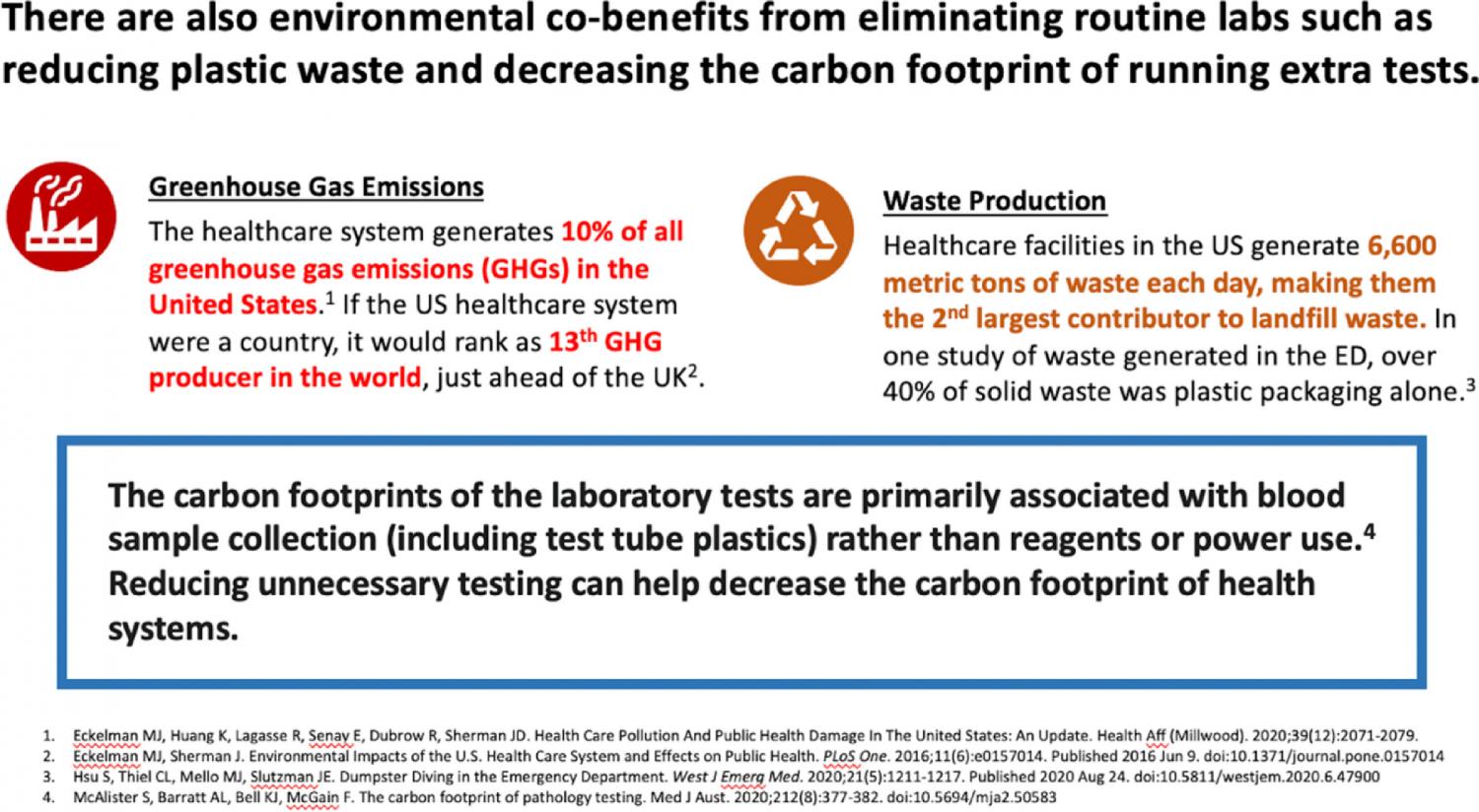
Background: The impact of unnecessary laboratory testing on healthcare's carbon footprint
The cumulative effects of climate change on human health are undeniable, and the healthcare system's role in perpetuating climate change is well documented. As an industry, healthcare contributes nearly 5% of all global greenhouse gas emissions (GHGs) and toxic air pollutants; in the United States, this percentage is even higher, as 10% of all GHGs are related to healthcare. [1,2] Of the GHGs produced in healthcare, over 80% come from the manufacturing and transporting of supplies used by clinicians, rather than from medical facilities themselves.[1]
Of the many proposals identified to decrease healthcare systems’ carbon footprint, one compelling strategy is reducing low-value care by minimizing overtreatment and overprescribing.[3] Given that estimates suggest up to one-third of laboratory tests may be considered wasteful, limiting these unnecessary tests is one mechanism to achieve that goal.[4] The carbon footprint of each lab test varies, ranging from 0.5 g CO2e/test for C reactive protein to 116 g CO2e/test for a full blood examination (Table 1).[5] The majority of laboratory tests’ carbon footprint comes from blood sample collection, including test tube plastics, rather than reagents or power use. With over 14 billion labs ordered annually in the US alone, reducing wasteful laboratory testing has the potential to meaningfully decrease healthcare's carbon footprint at scale.[6] Although overuse of medical services, including diagnostic studies like laboratory tests, has been primarily noted in higher-income countries, evidence suggests that overuse of low-value testing can be seen worldwide: thus, efforts to curtail inappropriate testing may have opportunities for global impact. [7], [8], [9], [10]
